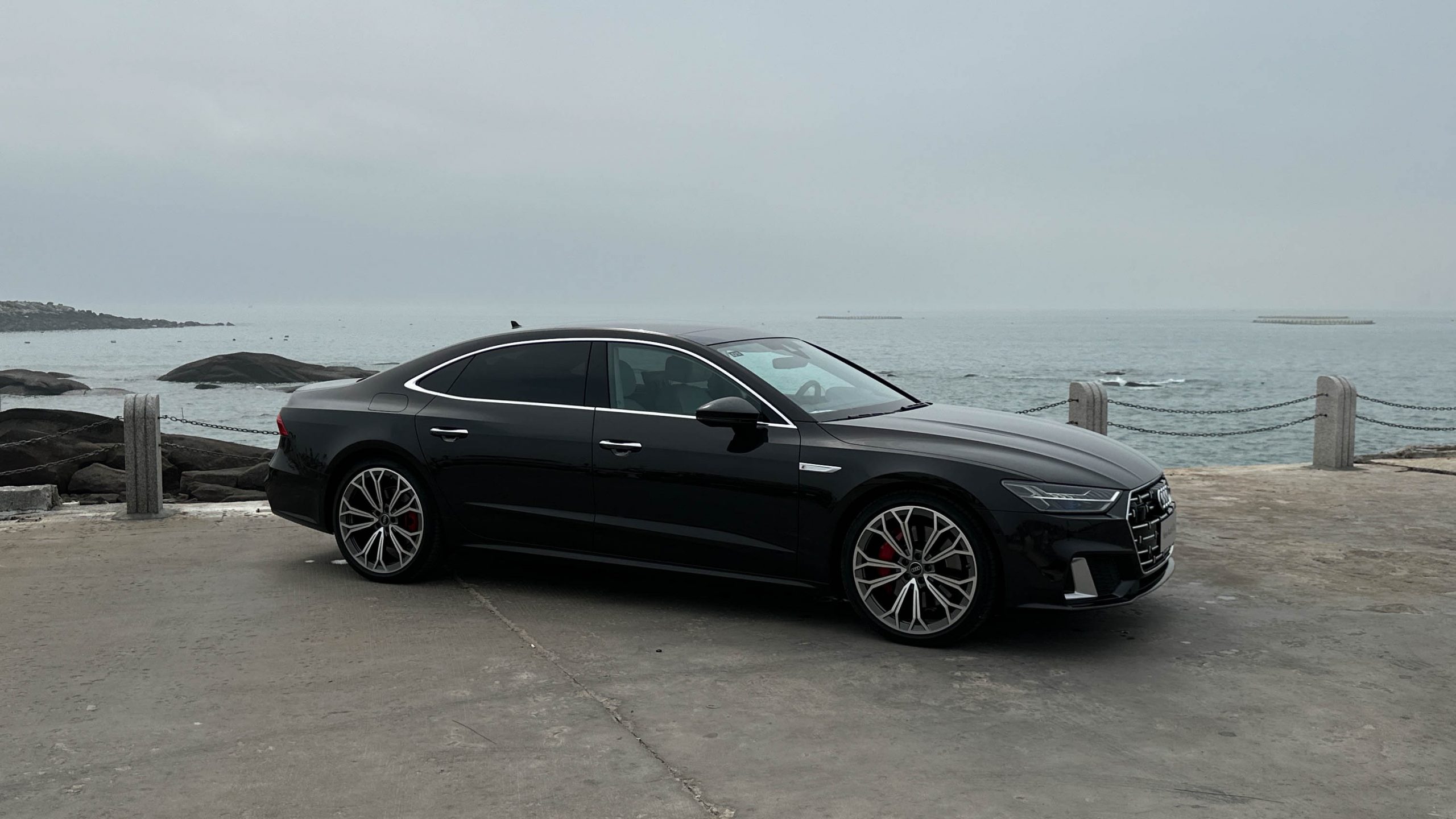Following the tradition of BBA’s mid-to-large-size vehicles, BMW 5 series and Mercedes-Benz E Class used to undergo model changes under nearly identical timelines, whereas Audi A6/A7 would be redesigned, and await the 5 and E’s redesign before updating their models.
In December of the 23rd year and January of the 24th year, the new Mercedes-Benz E Class and BMW 5 Series were launched in the domestic market. Concurrently, the Audi A6 and A7 introduced redesigned models both abroad and domestically. SAIC Audi’s A7L also seized the opportunity, releasing a new A7L model.
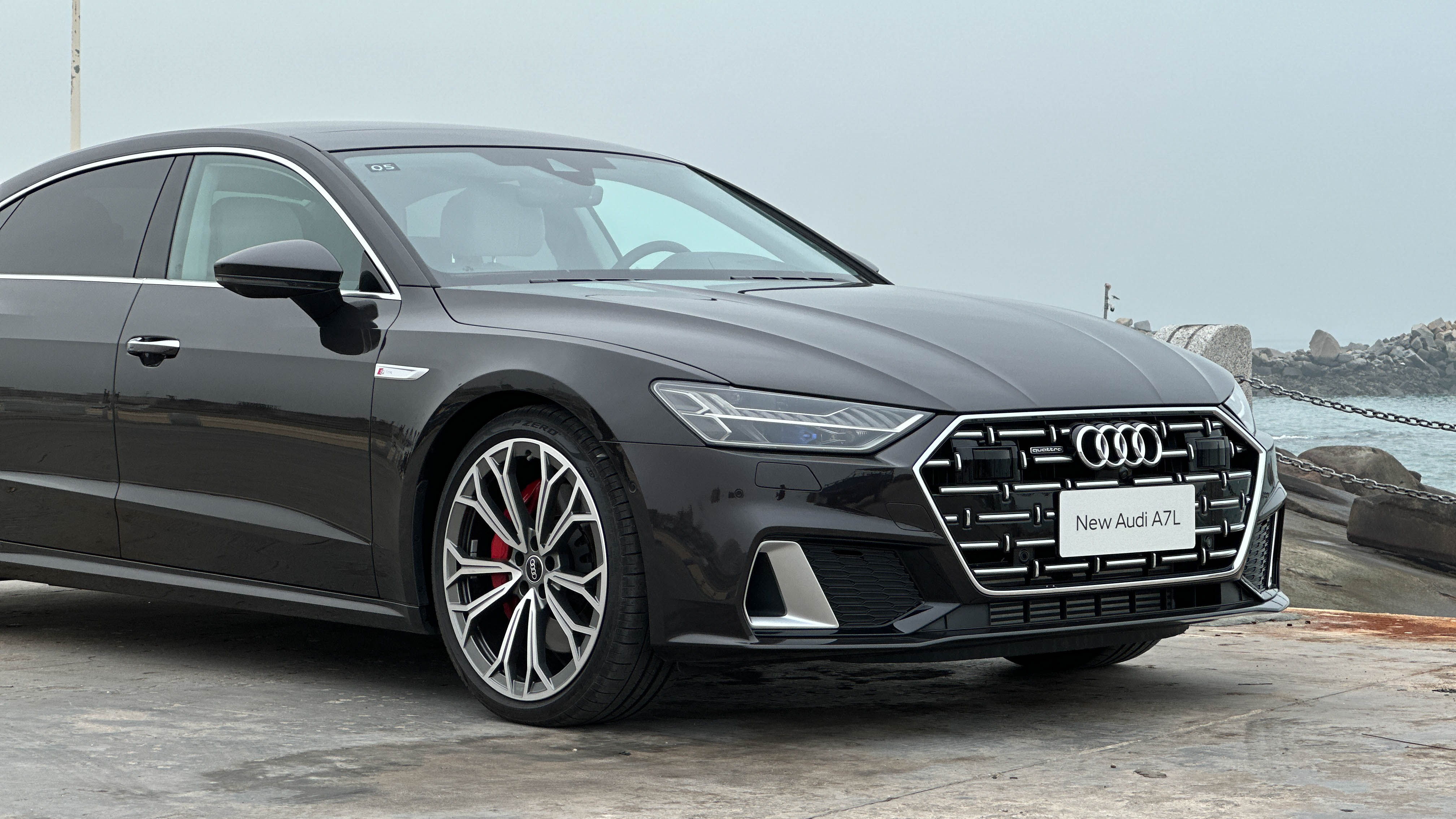
Given the Mercedes-Benz E Class equipped with the 8295 chip, and the 5 series furnishing almost the exact interior design as its older sibling, the 7 series, both models have taken strides to enhance their intellectual and atmosphere-driving effect, elevating their position as benchmarks in the luxury mid-to-large-size segment. Can the just redesigned A7L keep its competitive edge in the luxury mid-to-large-size market relaying the same interior as Audi A6/A7 for nearly 5 years in an era where automobile technology leaps and bounds?
5 Years and Its Cabin Still Holds Good
Audi’s A7L has been equipped with the current cockpit design for 5 years since its first introduction, which, in these 5 years, is the same design from A6 to RSQ8. This interior design and interaction have thereby become quite familiar to Audi enthusiasts.
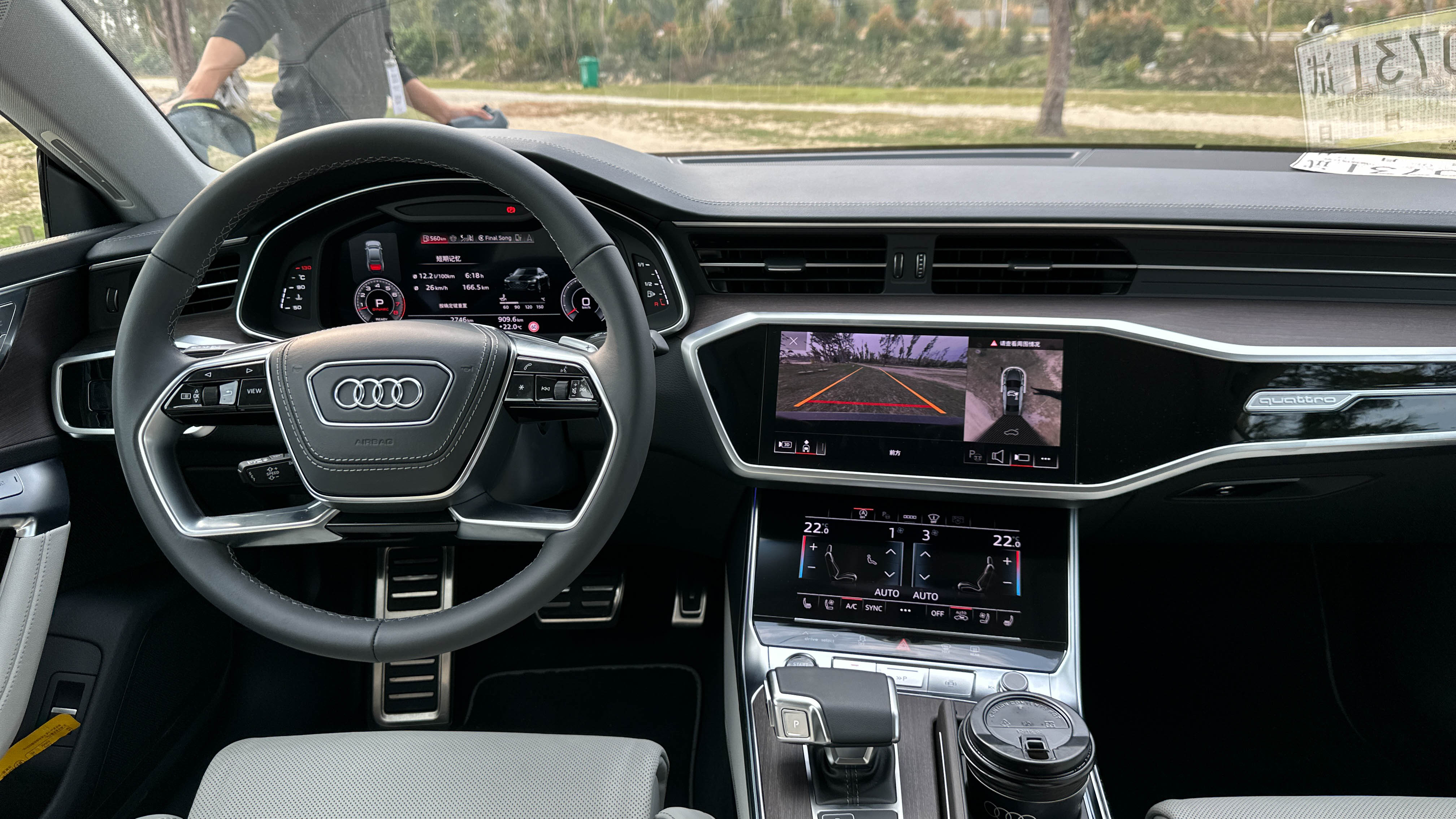
In terms of screen count, Audi’s A7L was one of the earliest models to feature a three-screen interface. A 12.3-inch dashboard and 10.1-inch central control screen have become standard specifications today. Still, the additional 8.6-inch screen, not the commonly seen auxiliary driver screen today, is specifically for adjusting the air conditioning interface, located lower on the control panel.
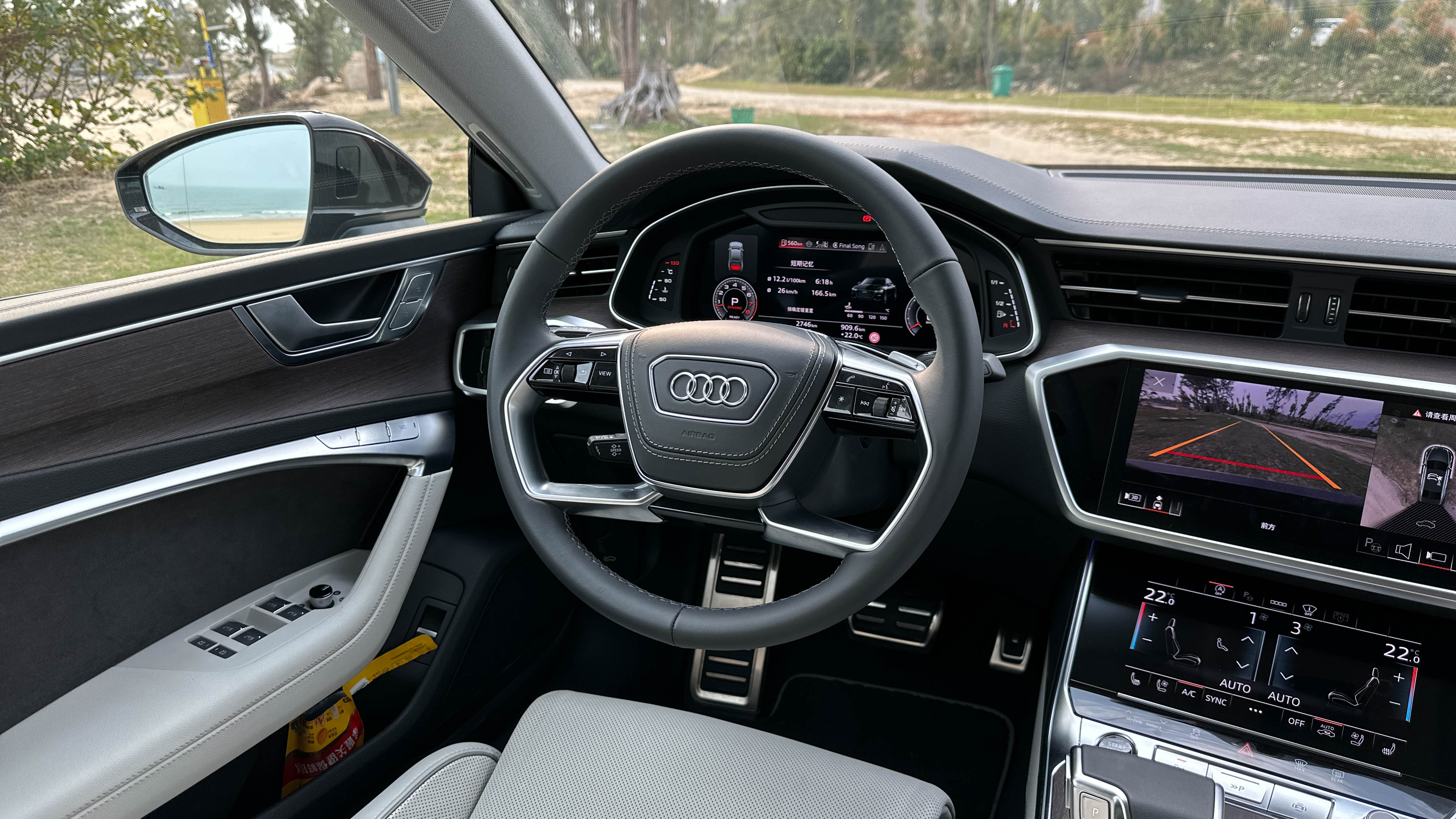
Audi’s set-up of upper and lower central control screens supports light taps for selection and heavy taps for confirmation, akin to the 3D Touch functionality first launched on the iPhone6s. This prevents misclicks while driving.

Simultaneously, dedicating a single screen for adjusting features like air conditioning and parking aids in making vehicular controls while driving.In addition, there’s an update in the instrument cluster this time,** finally replacing the original ACC-based assisted driving interface with a bird’s eye view layout**, which makes it easier than before to judge the vehicle’s perception and recognition.
In terms of user experience, the visualization on the A7L is one of the smoothest among joint venture brands, aside from LOTUS. Whether it’s lane line changes or vehicle following variations, it’s exceptionally smooth. The lanes on both sides of the visualization will have oncoming car alerts, reminding the driver of the rapidly approaching cars from behind, even without looking at the lane-change assisting light on the rearview mirror.
Although FAW Audi’s bird’s eye view assisted driving interface lags behind new power in terms of display precision and richness, such improvement ensures the Audi brand no longer lags behind in the BBA. We are also curious whether, in addition to the A7L, Audi will unlock the bird’s eye view of assisted driving visualization for the following models via OTA.
In the 10.1-inch central control screen, SAIC Audi’s store now supports up to 37 third-party Apps, making it the car model with the most plentiful applications I’ve come across among joint venture brands in the same category. The most commonly used music apps include QQ and NetEase, the most preferred navigations other than Baidu and AutoNavi also includes Tencent, not to mention video apps like Bilibili, iQiyi, and Youku, also games and others.
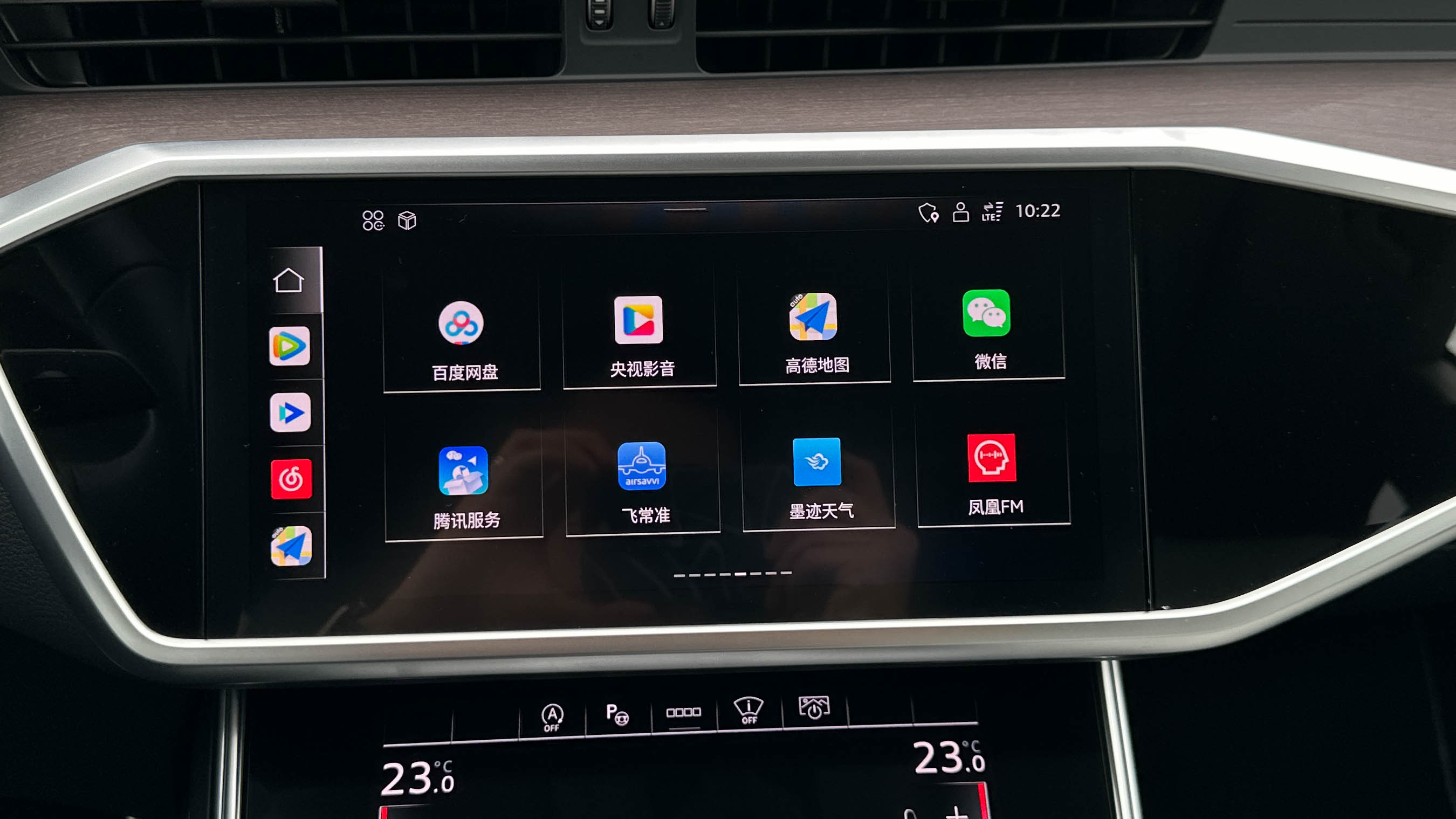

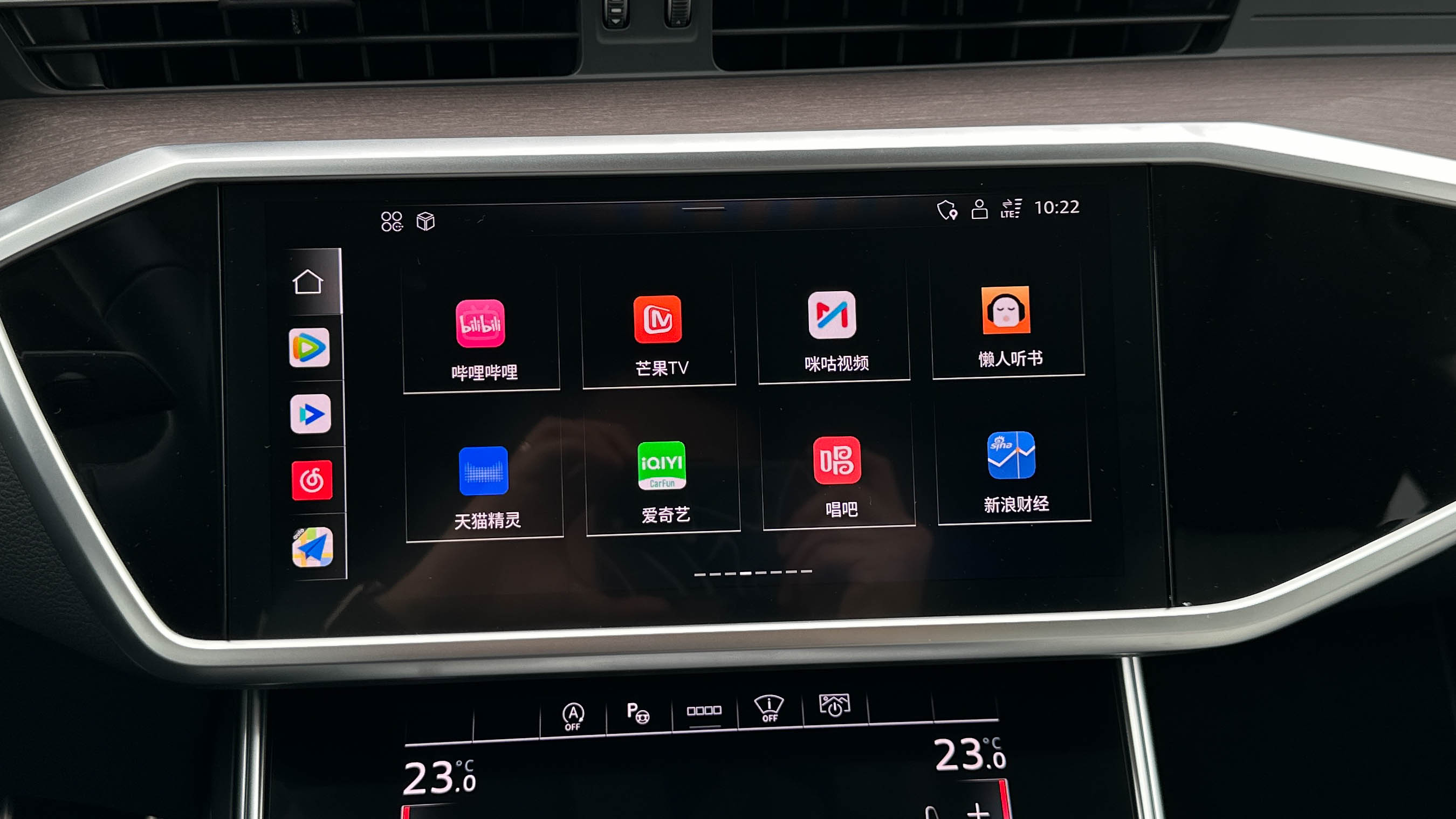
In order to catch up with the luxury definitions of freshly renewed 5 Series and E-Class, the new SAIC Audi A7L firstly enriched its interior materials, such as changing the steering wheel airbag cover, the knee-support points on both sides of the central control to genuine leather; the buttons in the vehicle to aluminum materials, etc.

The new SAIC Audi A7L we test drove this time is the 55TFSI flagship model, which highlights the two entertainment screens and a vehicle control screen additionally equipped in the rear row. Therefore, for this version, the more likely usage scenario is for 4-person travel.
The new A7L’s rear seat control screen supports adjustments to the seat backrest, air conditioning, entertainment, and the sunshade among other features. An executive button is also installed on the right side of the door panel, meaning this car ideally supports business and administration purposes.
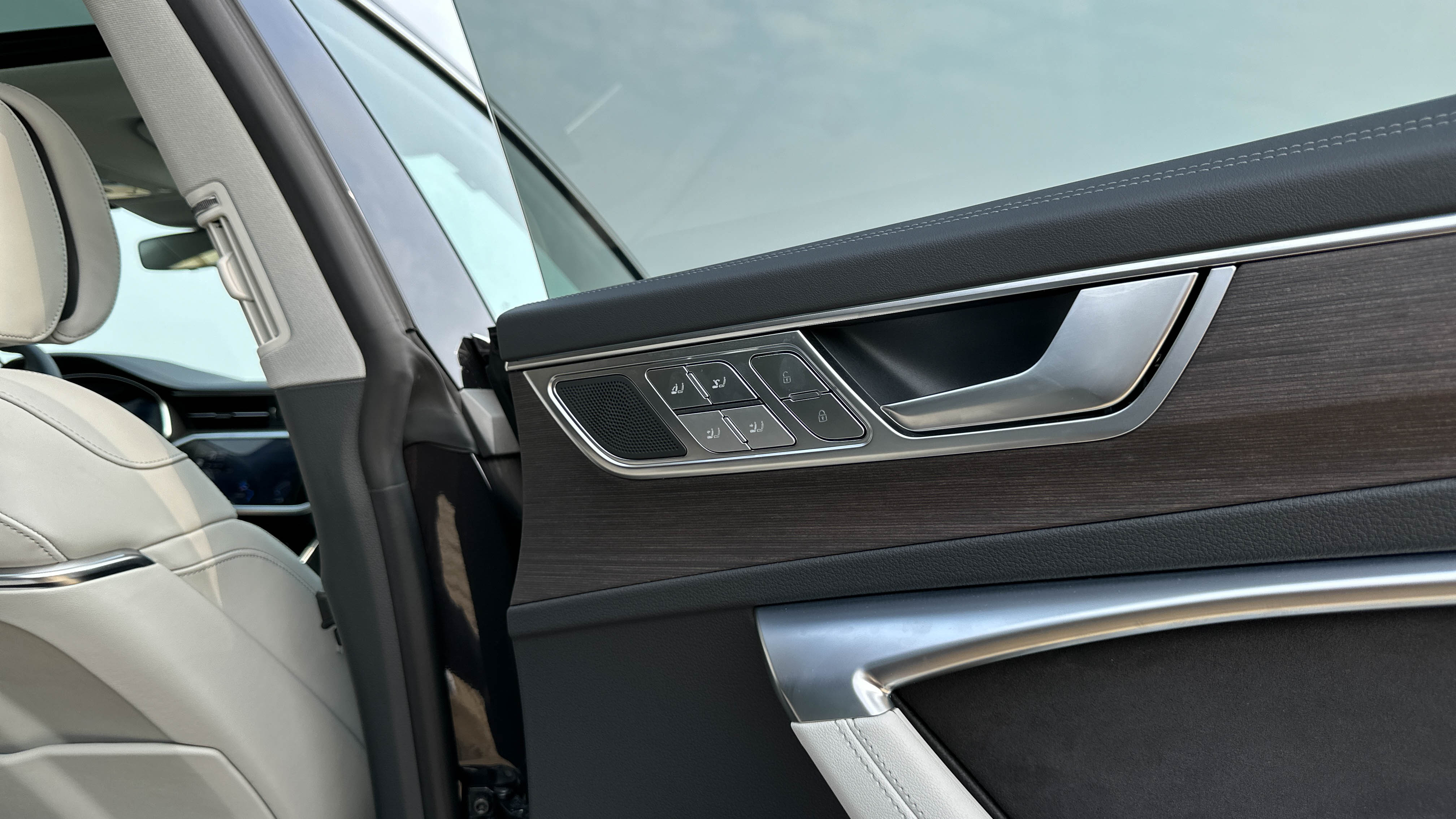
However, the utility of the two rear entertainment screens pales compared to the front control screen. These screens do not support third-party application involvement. Functions such as music, video, gaming, and navigation are sadly unaccessible on the rear screens. These screens are primarily purposed for screen casting, supporting HDMI input and audio output. Common use cases include connecting a computer for movie watching or linking game consoles for gaming, or even linking a TV box to the car’s Wi-Fi for viewing.
In conclusion, FAW Audi’s new A7L interior interaction design might seem lackluster in terms of novelty but compensates with its convenience and usability. It also offers a wide range of applications, diminishing the car’s lack of interconnectivity. Furthermore, through Audi’s app, the FAW Audi A7L can be controlled via the Apple Watch and also features an automatic parking function on mobile.
How’s the earliest LiDAR doing now?
Audi first introduced LiDAR to the same class of cars with the release of the A6 C8. This has since been featured in the A7/A7L. Looking back five years, Audi’s decision to use LiDAR in medium and large vehicles was quite visionary.

However, Audi hasn’t fully explored the potential of LiDAR today but has utilized it more in terms of redundancy while still maintaining the comfort and precision of ACC with millimeter waves and monocular.
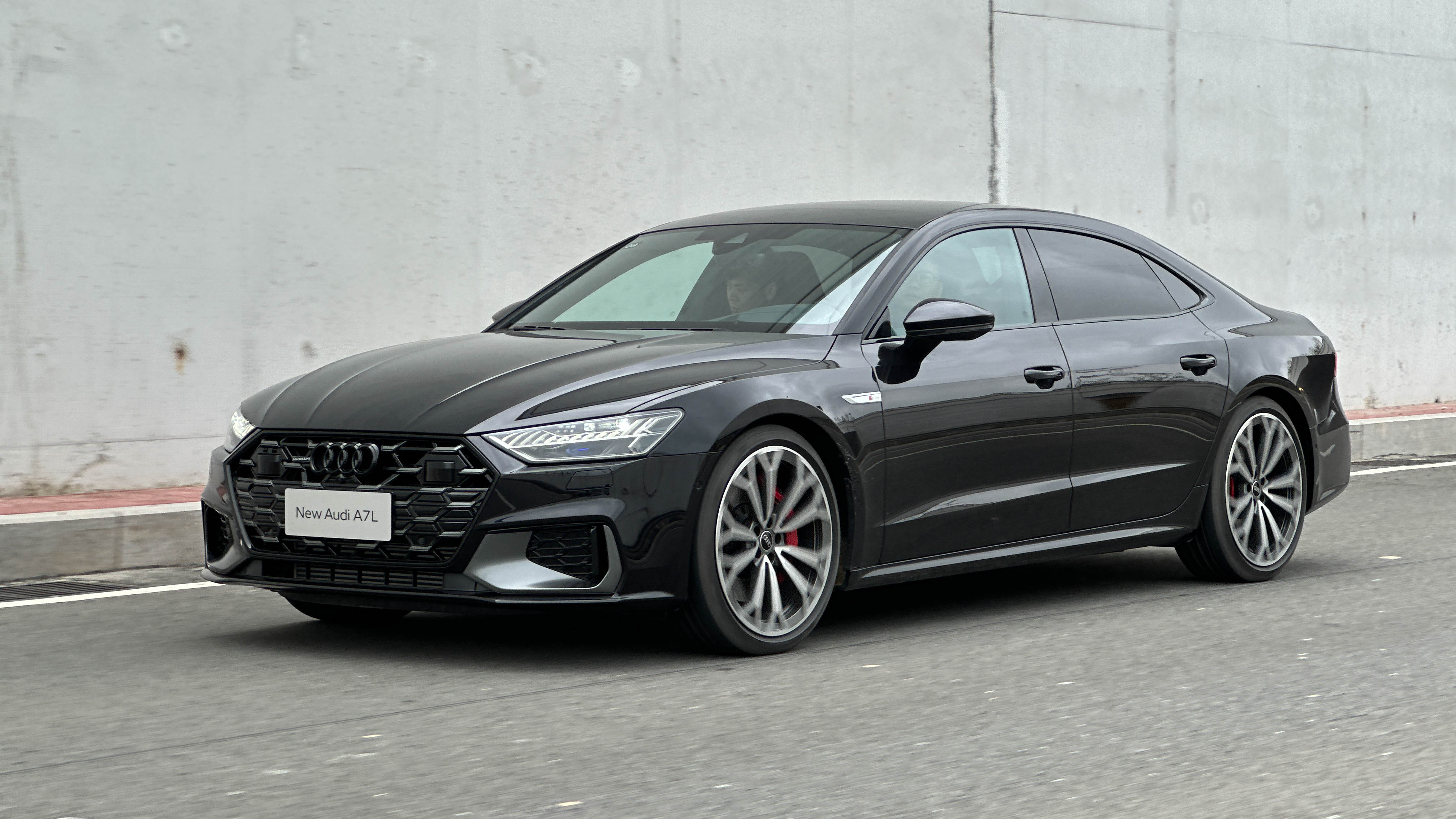
Thus, in terms of practical experience, the A7L’s assisted driving is incredibly comfortable. The adaptive cruise control’s acceleration and deceleration are fairly mild, which makes it perfect for most conditions, even urban settings. The lateral control is smooth as long as the lane markings are clear enough, requiring minimal steering corrections, closely resembling the user’s driving habits. Overall, this is an effective assisted driving feature on expressways, freeways, and closed roads.In terms of hardware, the new FAW Audi A7L is equipped with a night vision camera. This feature is especially beneficial in dimly lit areas or neighborhoods, aiding drivers to identify potential hazards early. However, the option for this system comes at a hefty price.
Final Words
After experiencing the new FAW Audi A7L, we can see that FAW Audi is striving to catch up to BMW and Benz in terms of new product offerings. In light of the software and configurations, FAW Audi’s latest updates have indeed elevated its product’s capabilities. With a solid platform and foundation, FAW Audi remains competitive in the market.
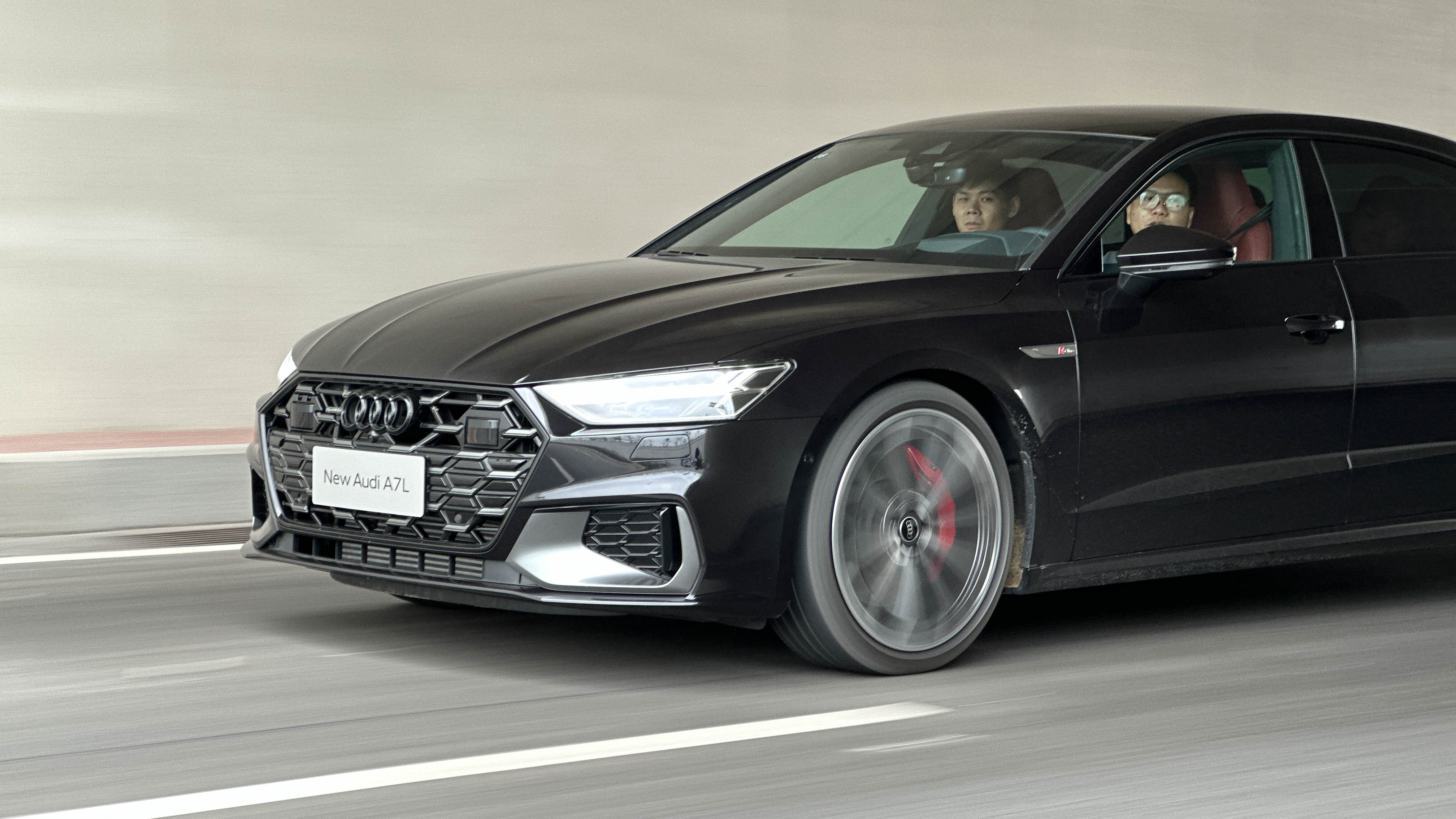
However, it should be noted that the current design language has been used for 5 years. In the past, when the pace of updates and rollouts was not as rapid, this pace was acceptable. But, the competition pressure in the domestic market is more intense now than ever before. Therefore, it’s high time for FAW Audi to hasten the iteration of the MLB EVO platform, as well as maintaining a steady pace in developing the brand-new A6 e-tron, based on the PPE platform, matching the rhythm of the electrification era.
This article is a translation by AI of a Chinese report from 42HOW. If you have any questions about it, please email bd@42how.com.
